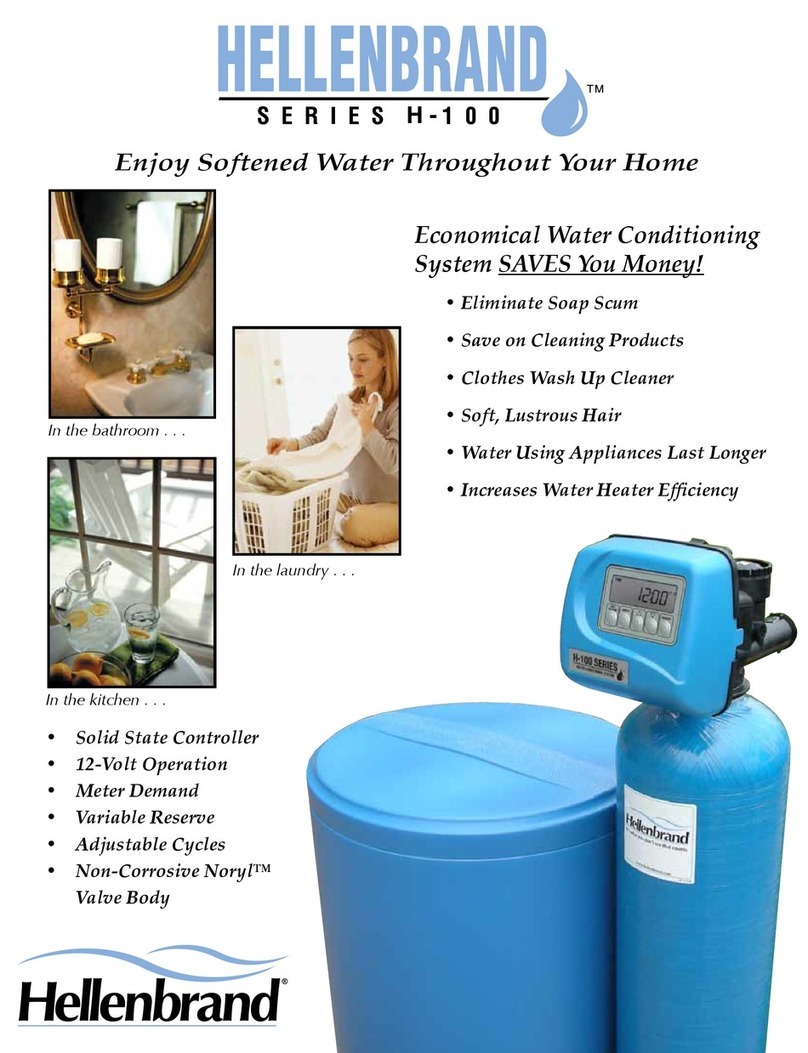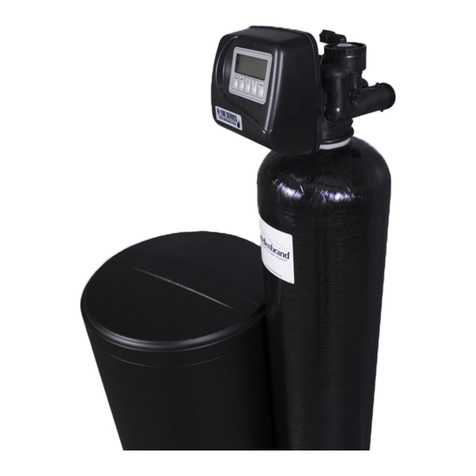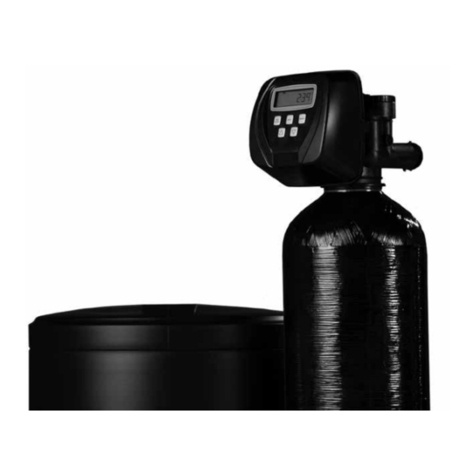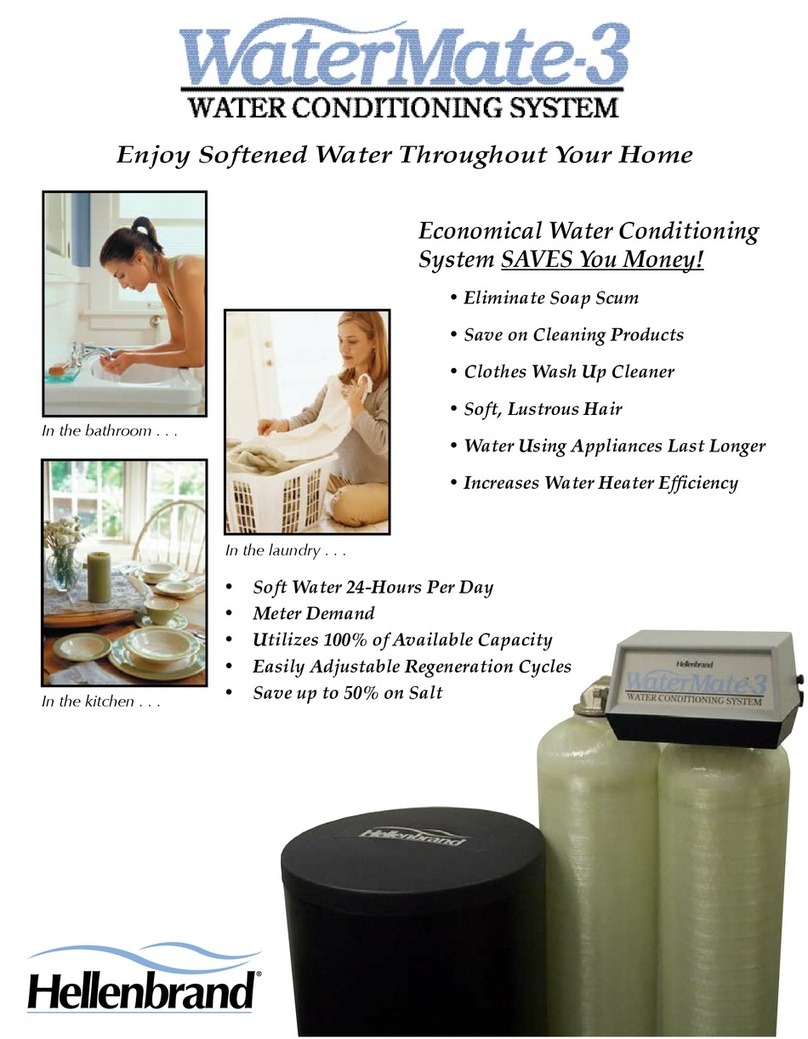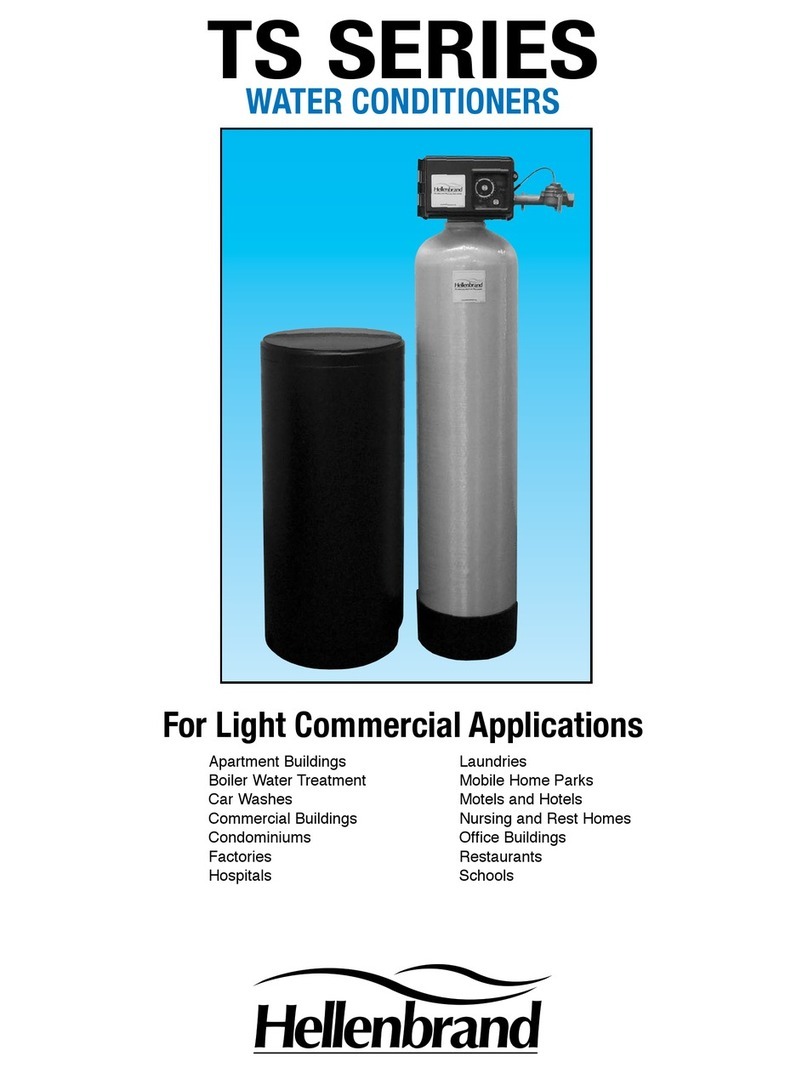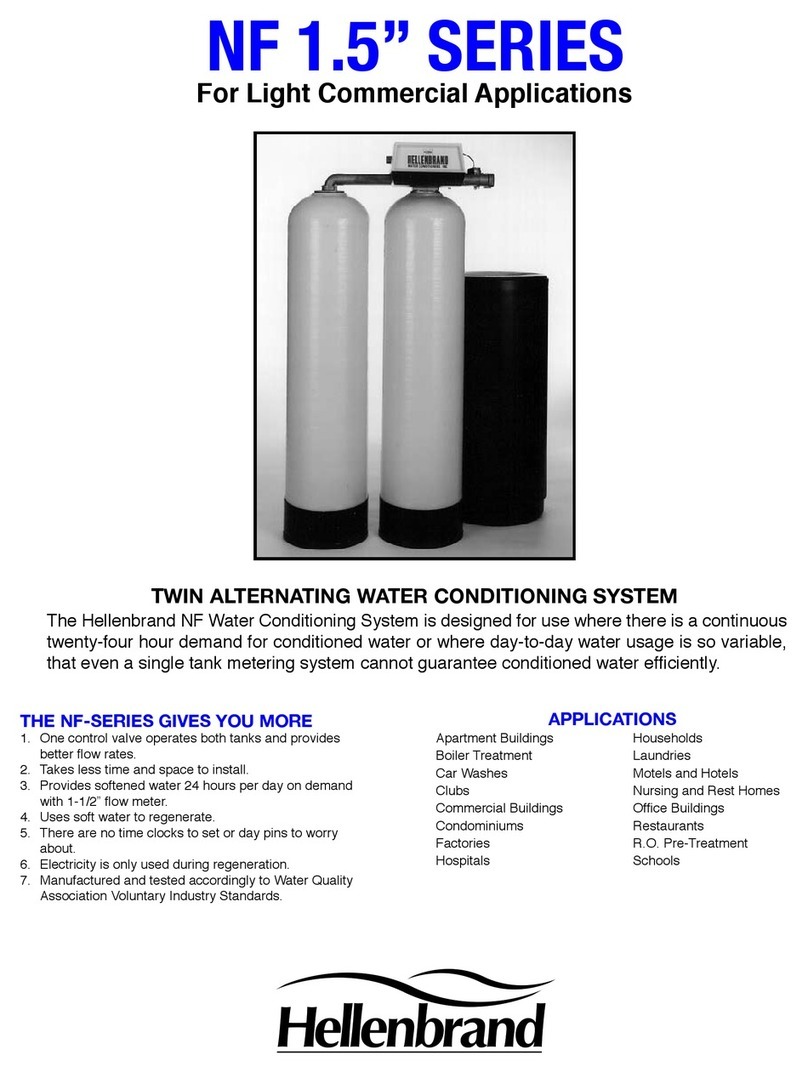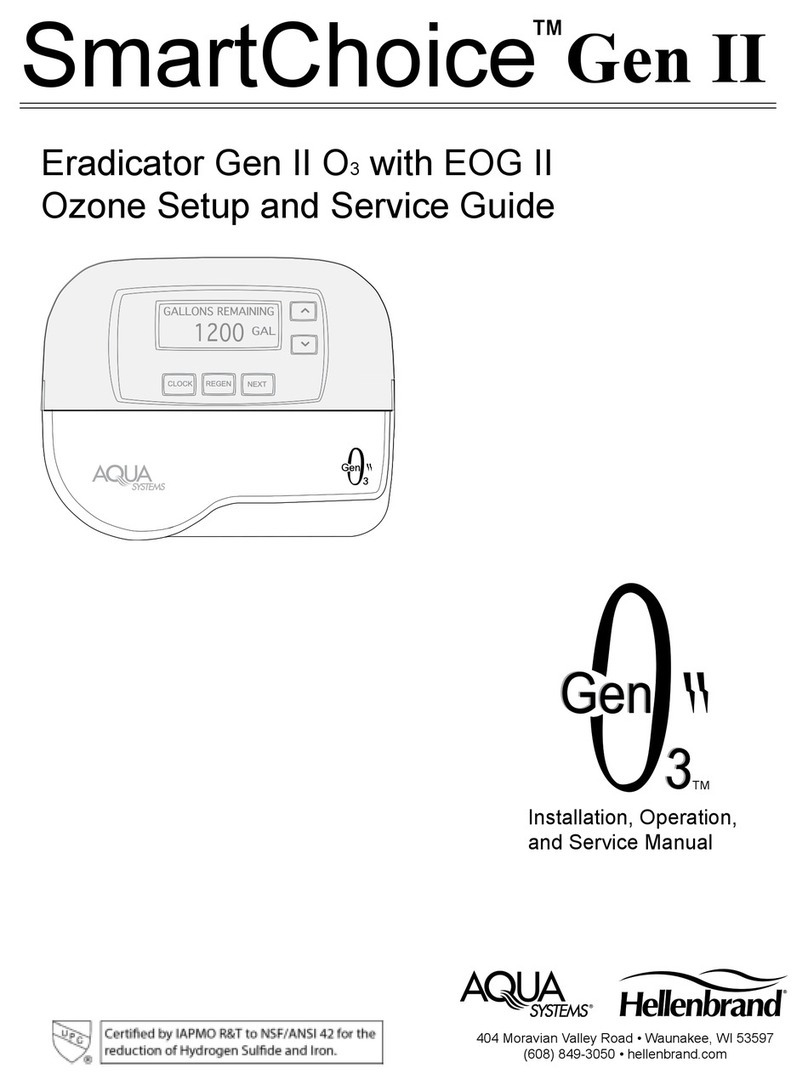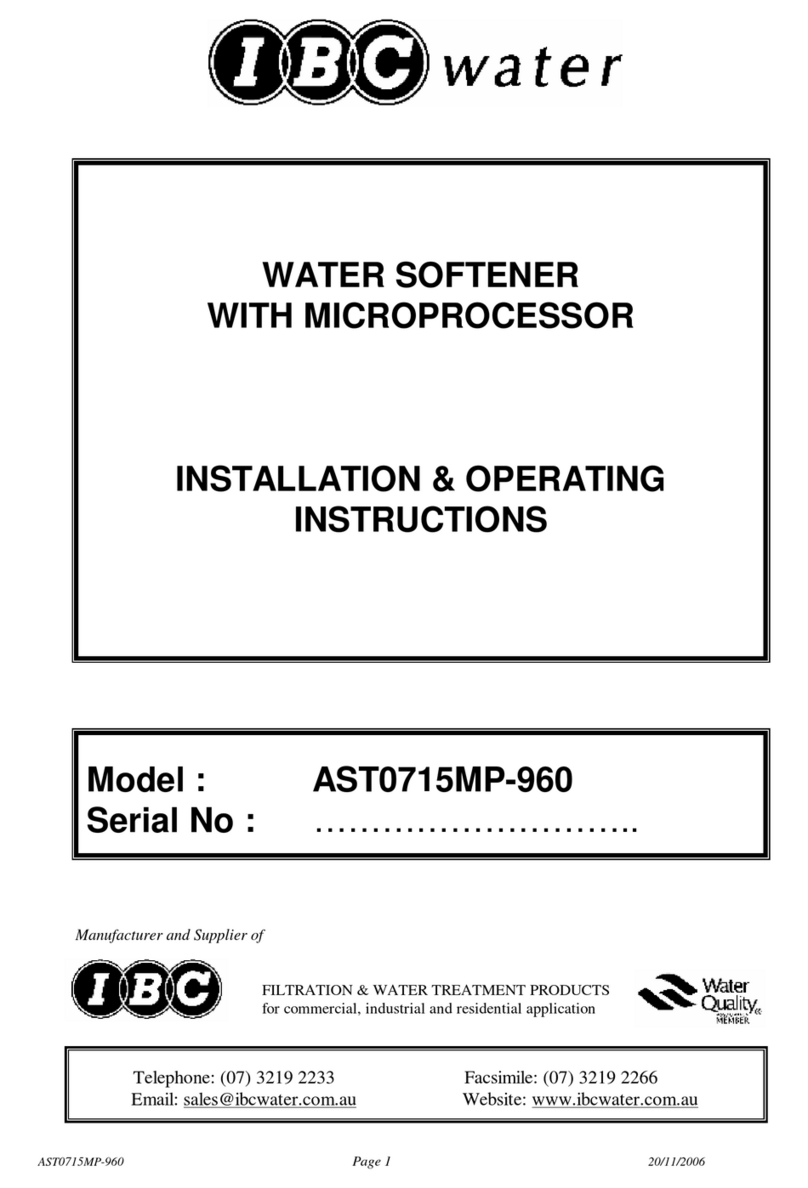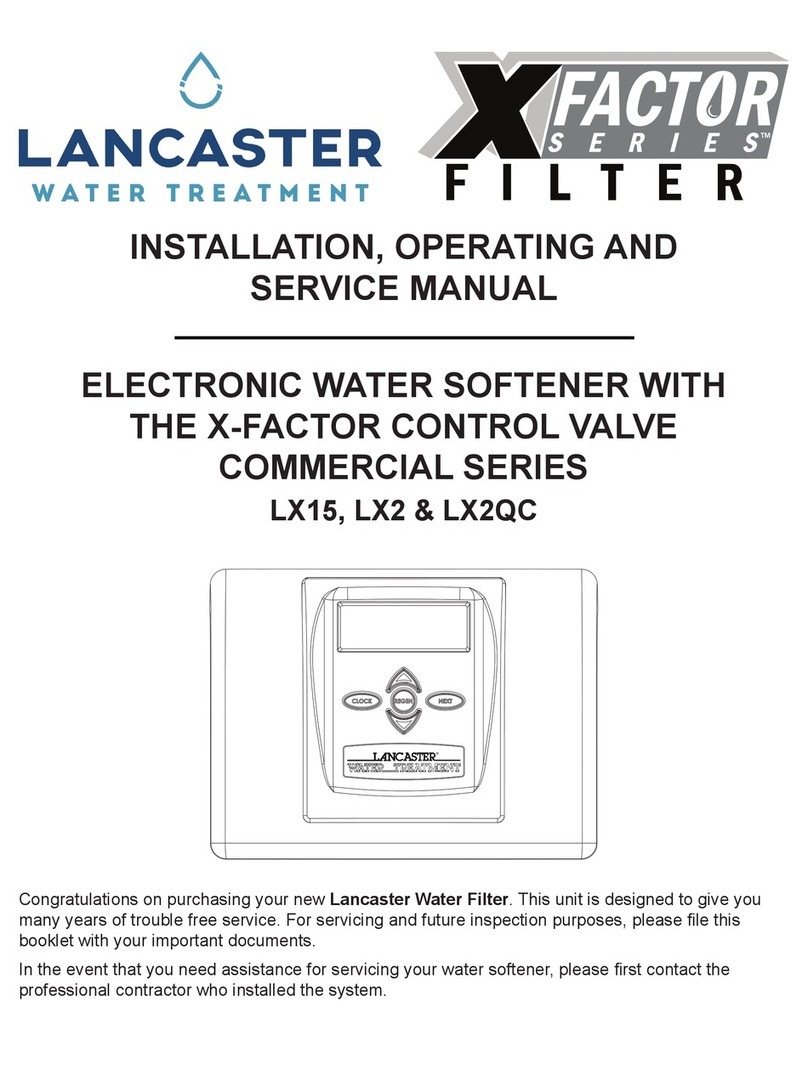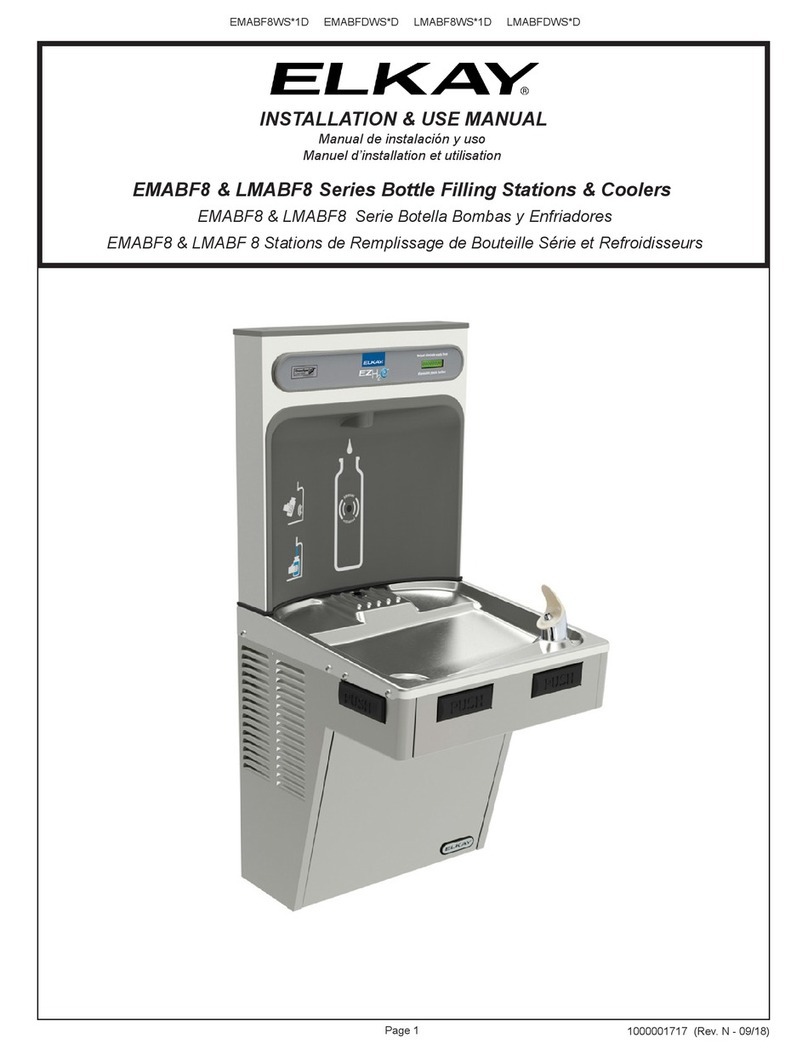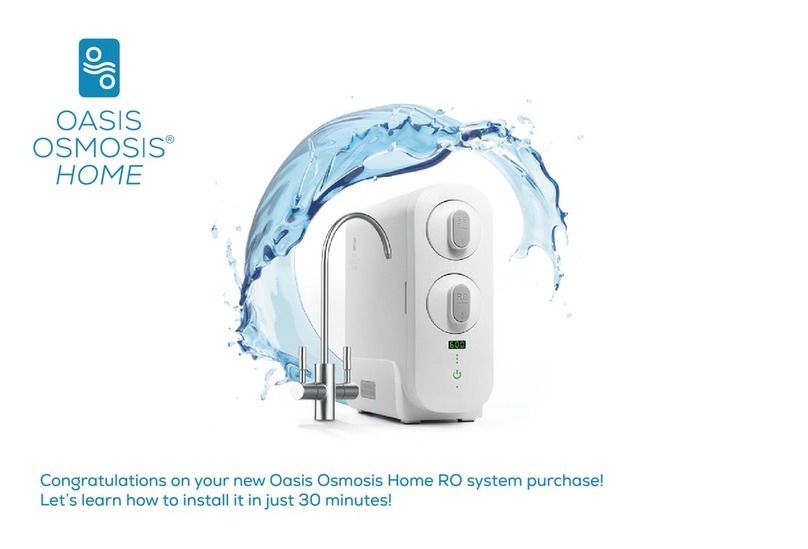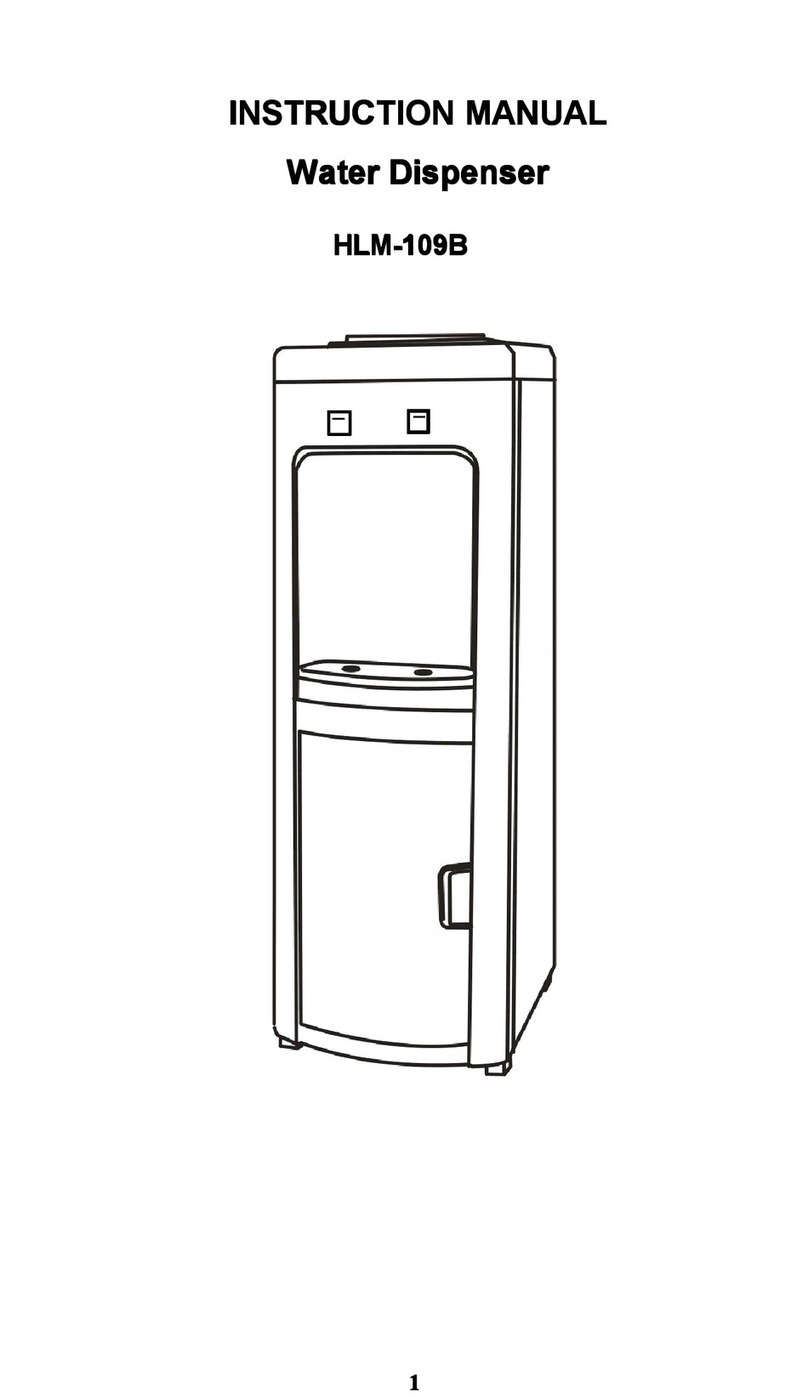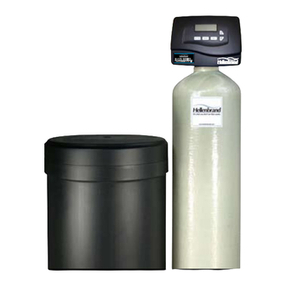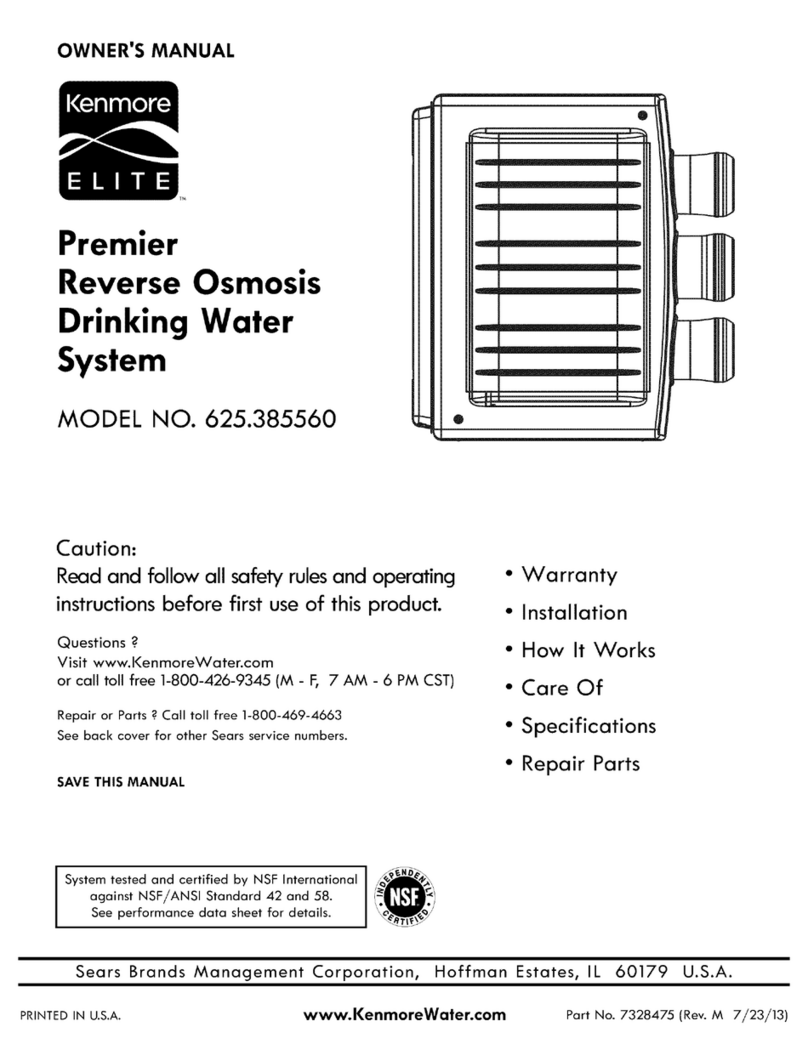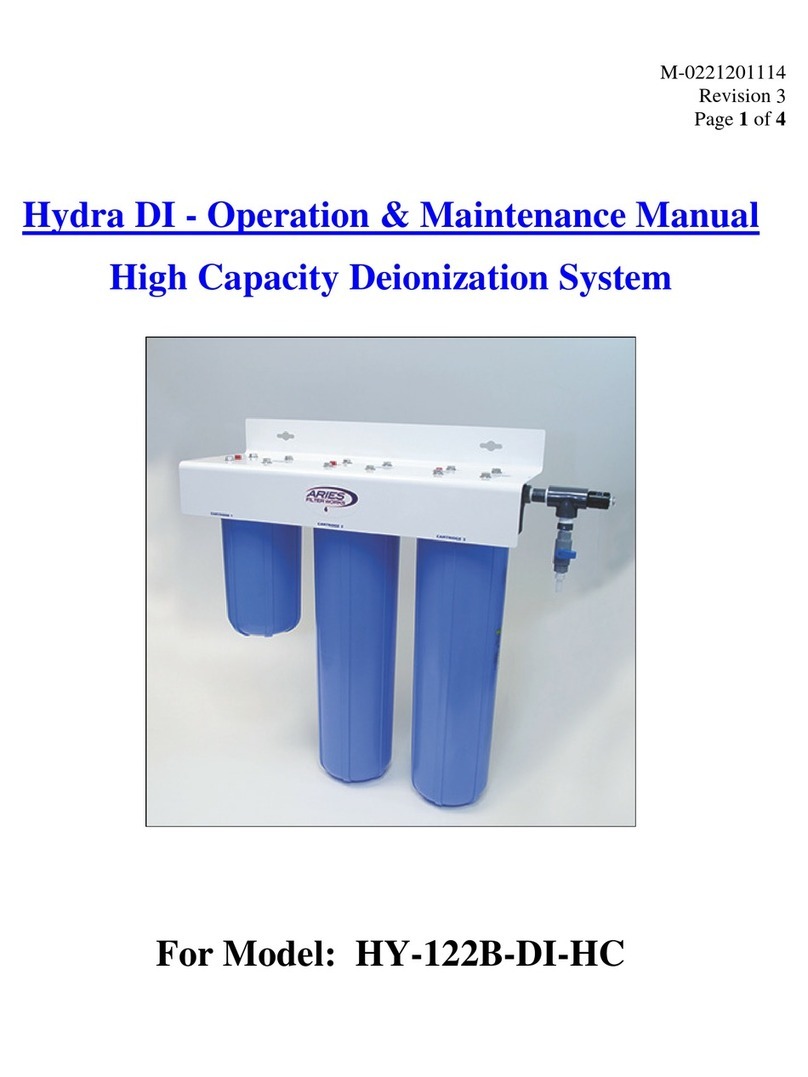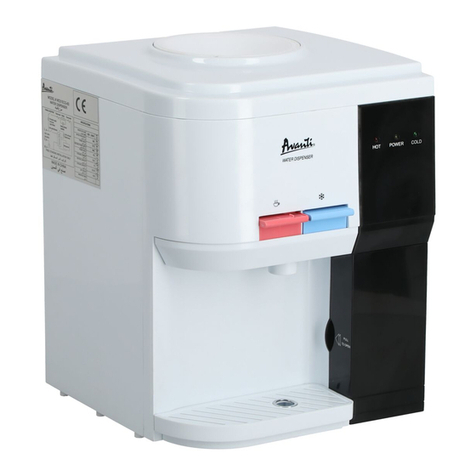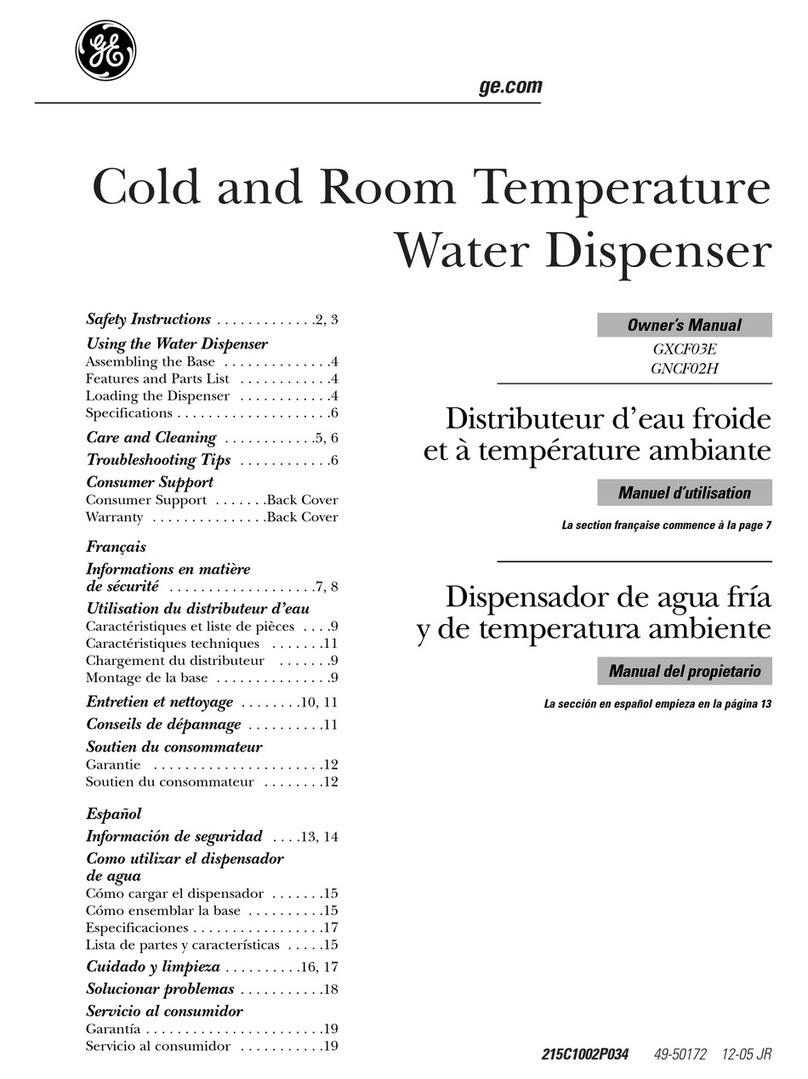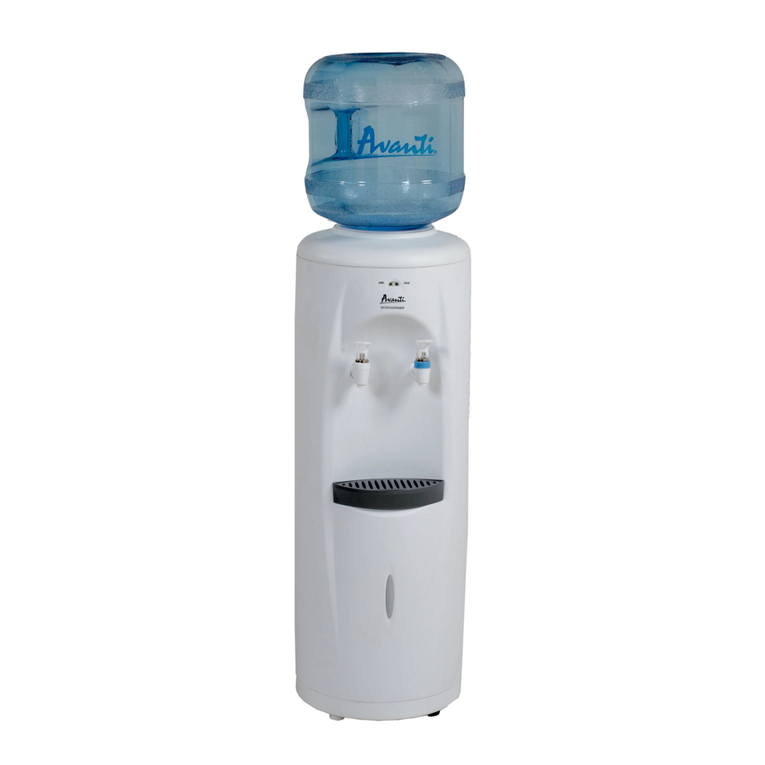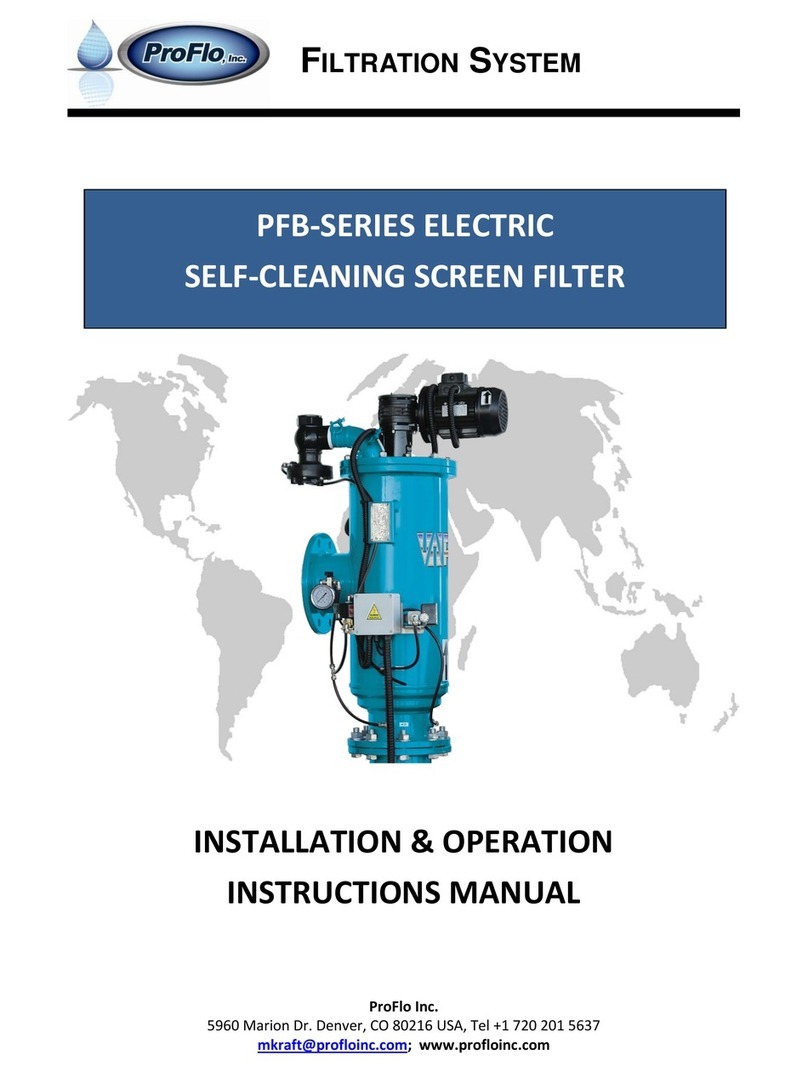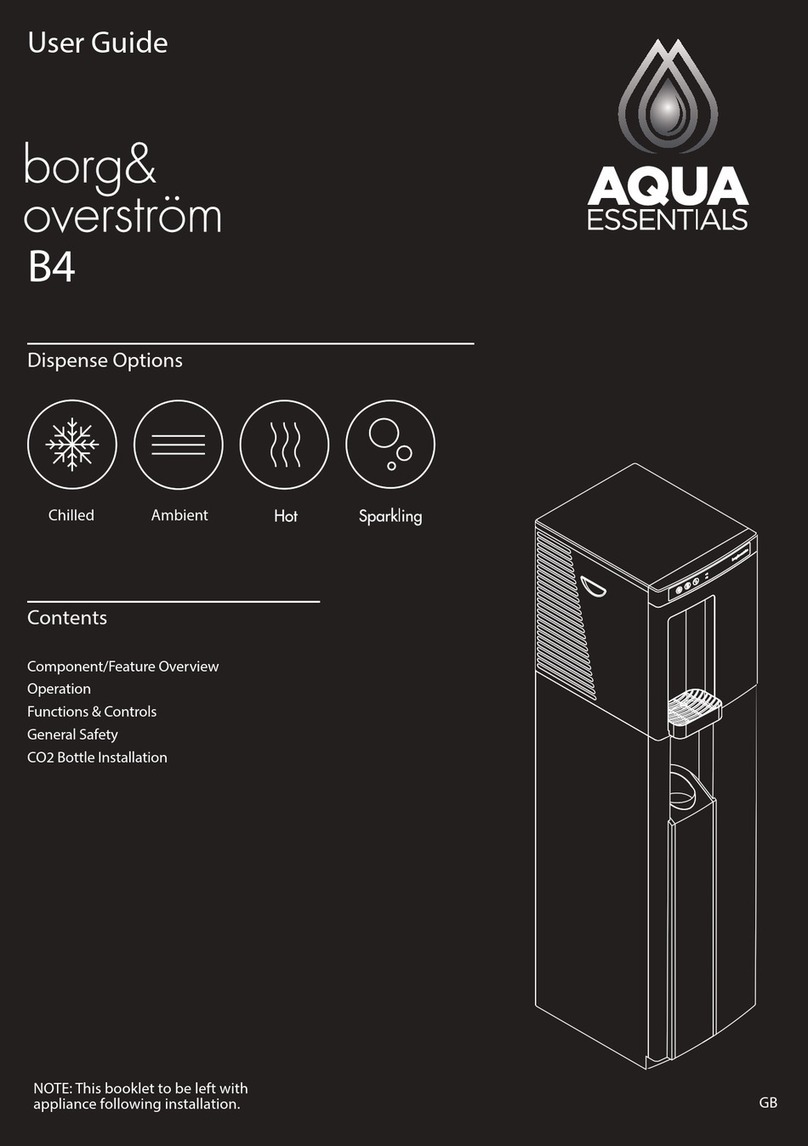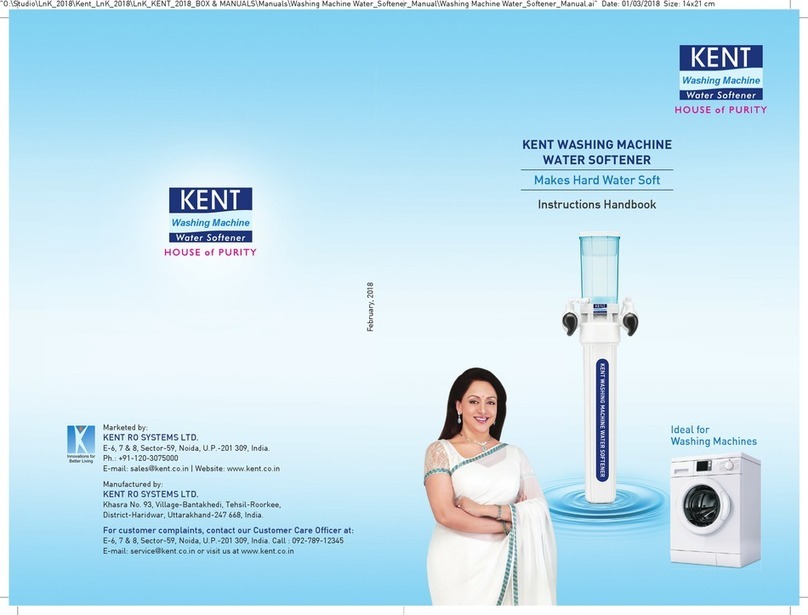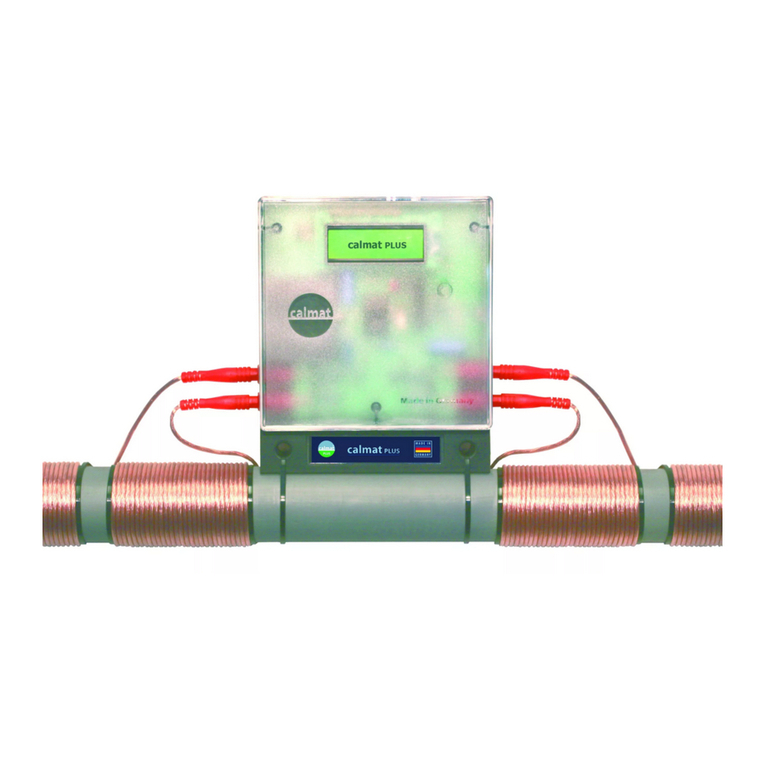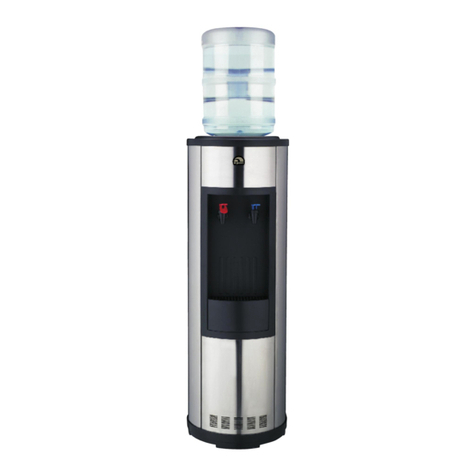
4
Water Pressure: A minimum of 25 pounds of water pressure
(psi) is required for regeneration. Maximum 100 psi.
Water Quality: On rural water supplies there is often a problem
with sand or sediment in the water. (This problem occasionally
occurs in public water supplies.) If the water is not ltered before
being softened, the sand and sediment may plug up the water
softener restricting the ow through the resin bed. This problem
often requires rebedding of the mineral tank. Note: Well and/or
pump problems aecting the operation of the softener are repairs
that are not covered under warranty. To prevent these unneces-
sary, and expensive repairs that are not covered under warranty,
we recommend the installation of an in-line lter system ahead
of a water softener.
Electrical: A continuous 110 volt 60 cycle current supply is
required. Make certain the current supply is uninterrupted and
cannot be turned o with another switch. All electrical connec-
tions must be connected per local codes. Surge protection is
recommended with all electric controls.
Existing Plumbing: Existing plumbing must be free from lime
and iron build-up. Piping that is built-up heavily with lime and/or
iron must be replaced. If piping is blocked with iron, additional
equipment must be installed ahead of the water conditioner to
correct the problem.
Drain Line: The softener should be located close to a drain.
Avoid overhead drain lines if possible to prevent back pressure
on the brine injector. Overhead drains are not to exceed 8 feet
above the oor and no more than 20 feet in length. The pipe
size for the drain line should be a minimum of 3/4”. Backwash
ow rates in excess of 7 gpm or length in excess of 20’ require
1” drain line.
Bypass Valves: Always provide for the installation of a bypass
valve.
Softening: It is recommended that the conditioner be installed
to soften both the hot and cold water supply. A separate hard
water faucet may be plumbed for drinking purposes if desired.
Outside faucets should be left on hard water.
Caution: Water temperature is not to exceed 110°F; the condi-
tioner cannot be subject to freezing conditions, or to a vacuum
due to loss of pressure (such as a water main break).
PRE-INSTALLATION CHECK LIST
(All electrical & plumbing should be done in accordance to all local codes)
OPERATING CONDITIONS
Your water conditioner has been designed to adequately
handle up to 100 grains per gallon of hardness as well as up to
2 ppm of ferrous bicarbonate iron. This is iron that is dissolved
in water and not visible to the eye in a freshly drawn sample.
After standing in contact with air, the ferrous iron will become
oxidized to the ferric state and start to precipitate as a reddish
brown oc. It can be seen and may cause discolored water. In
order for your softener to remove the iron, air (oxygen) must be
kept from coming in contact with water until after it has been
passed through the water conditioner. In some cases, additional
equipment may be required to treat water supplies having special
characteristics, such as: ferric hydroxide iron, iron bacteria, low
pH, taste and odors, etc. If any question should exist, contact
your dealer.
This water softener is not intended to be used for treating
water that is microbiologically unsafe or of unknown qual-
ity without adequate disinfection before or after treatment.
WATER SOFTENER DISINFECTION
The construction materials of your water softener will not support
bacterial growth nor will these materials contaminate a water
supply. However, the normal conditions existing during shipping,
storage, and installation indicate the advisability of disinfecting
a softener after installation, before the softener is used to treat
potable water. In addition, during normal use a softener may
become fouled with organic matter or in some cases, with bac-
teria from the water supply.
Therefore, every water softener should be disinfected after
installation, some will require periodic disinfection during their
normal life. You have two choices for disinfection as follows:
A. SODIUM HYPOCHLORITE (household bleach)
5.25% SODIUM HYPOCHLORITE solutions are available
under such trade names such as Clorox, Linco, Bo Peep,
White Sail and Eagle Brand Bleach. If stronger solutions are
used, such as those sold for commercial laundries, adjust
the dosage accordingly.
1. Dosage:
a. Softening resin; 1.2 uid ounce per cubic foot of
resin.
2. Add the required amount of hypochlorite solution to the
brine well of the brine tank.
a. Proceed with the normal regeneration. Press REGEN
and allow the water softener to go through a normal
regeneration.
B. EPA and NSF approved Sani-System by Pro Products.
This can be purchased from your water treatment provider
or at: http://proproducts.com/products/sani-system.








